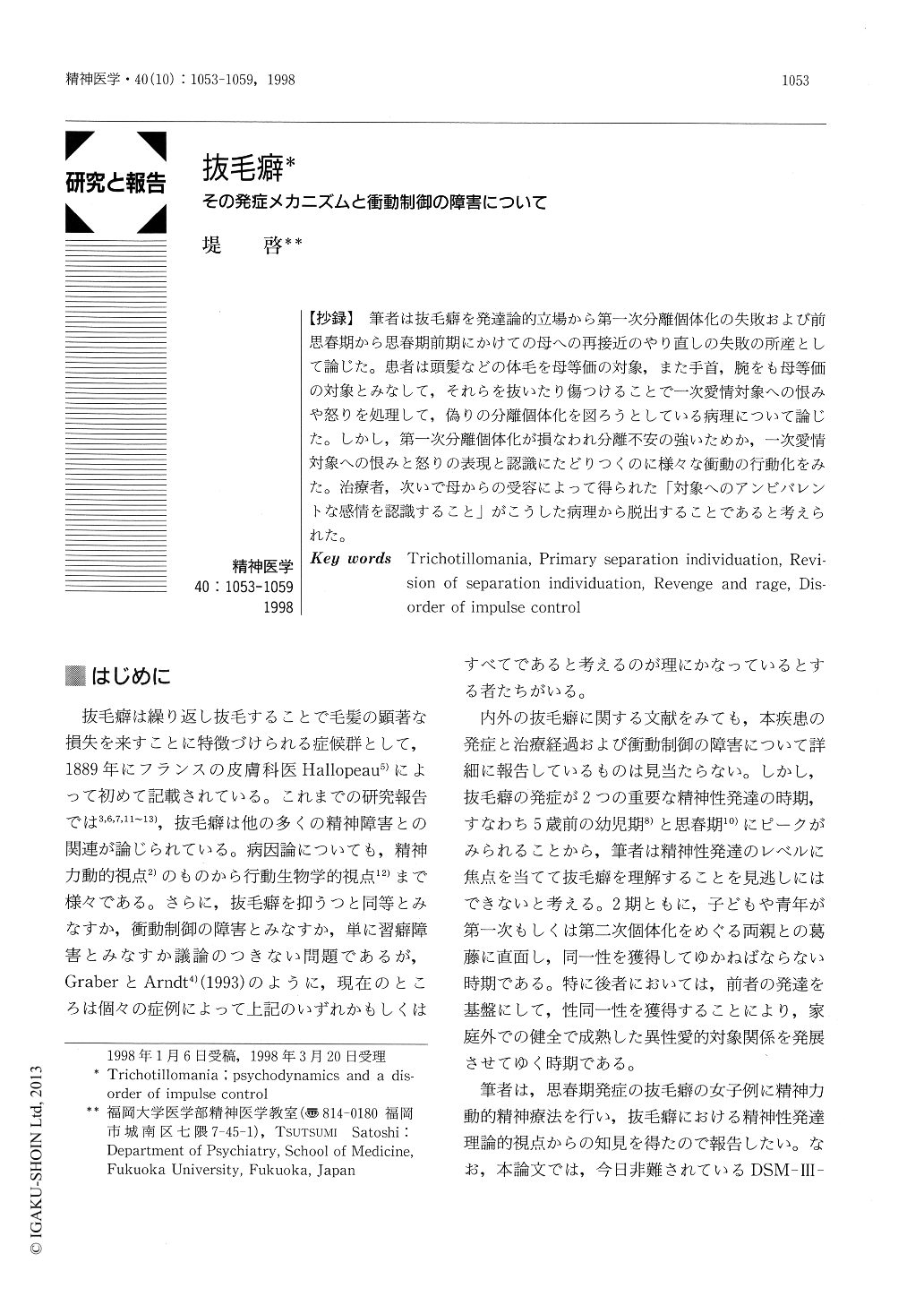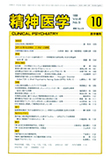Japanese
English
- 有料閲覧
- Abstract 文献概要
- 1ページ目 Look Inside
【抄録】筆者は抜毛癖を発達論的立場から第一次分離個体化の失敗および前思春期から思春期前期にかけての母への再接近のやり直しの失敗の所産として論じた。患者は頭髪などの体毛を母等価の対象,また手首,腕をも母等価の対象とみなして,それらを抜いたり傷つけることで一次愛情対象への恨みや怒りを処理して,偽りの分離個体化を図ろうとしている病理について論じた。しかし,第一次分離個体化が損なわれ分離不安の強いためか,一次愛情対象への恨みと怒りの表現と認識にたどりつくのに様々な衝動の行動化をみた。治療者,次いで母からの受容によって得られた「対象へのアンビバレントな感情を認識すること」がこうした病理から脱出することであると考えられた。
The author discussed, from the viewpoint of developmental psychology, a case of trichotillomania as a result of a failure of a rapprochement during infancy and a failed revision of a rapprochement during preadolescence to early adolescence. He regarded the patient own hair and forearm as symbols of her mother, and she tried to establish a pseudo-separation individuation by pulling out her hair and cutting her wrist and arm. This expressed her desire for revenge and rage toward the primary object. However, since the primary separation individuation was incomplete, a strong separation anxiety was generated and a variety of acting-out took place before the patient was able to recognize her vengeful feelings and rage toward her primary love object. It was considered a therapeutic outlet from such psychopathology that she could recognize her ambivalent feelings toward the object. This recognition was obtained through acceptance by her therapist and then by her mother.

Copyright © 1998, Igaku-Shoin Ltd. All rights reserved.


